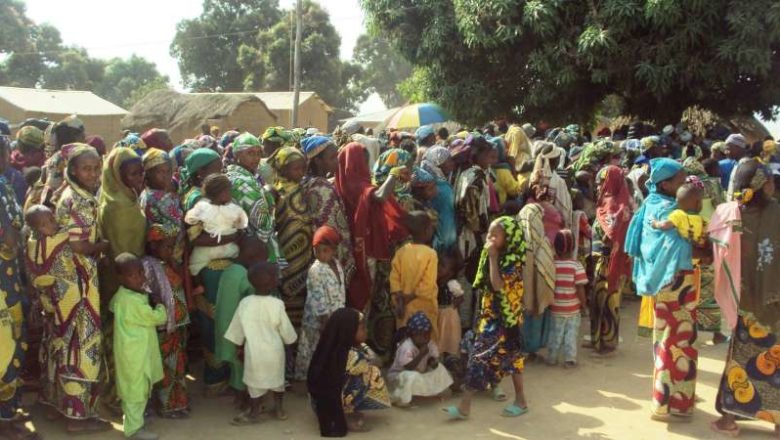By Akanimo Sampson
Cameroonian refugees have begun moving to border communities in Cross River and Taraba States of Nigeria as destitute and are eking out a living in low-wage jobs. According to a previous statement by the United Nations High Commissioner for Refugees (UNHCR), they are crossing the border into the two states, thus bringing the number of refugees to around 100,000.
In the last two weeks, some 8,000 people have fled into Nigeria from Cameroon to escape clashes between the armed security forces and armed separatists in the latter country, the UN refugee agency said on Thursday.
While fighting so far is within Cameroonian borders, there are growing fears its escalation could destabilise all of Central Africa and parts of West Africa.
The fleeing refugees are mostly young people and women who have witnessed violence firsthand. A 39-year-old mother of four told UNHCR, “I could not take any clothes. There was shooting—they killed my uncle and shot my cousin.”
Janet Obi, who used to trade in cocoa and clothes back home in Cameroon, is now tending cornfields in a village in Nigeria, the Qatar-based media company Al Jazeera reported in August.
Stella Obi (no relation of Janet) told Al Jazeera as she worked the soil in a small vegetable field, “I get paid between N500 to N1,000 (about $2 to $4) a day. I never tasted this kind of suffering when I was in my village in Cameroon.”
These refugees are “employed as cheap day labourers, mostly in cocoa fields”, Chiara Cavalcanti of UNHCR told Africa Renewal. Just as it is for western Cameroon, cocoa is Cross River’s main commercial agricultural product.
Some of the refugees fleeing violence reportedly arrive at the border with gunshot wounds. According to new arrivals, most come from areas near the border and have trekked across savannah and forests to reach Nigeria.
In October 2017, an armed revolt erupted in Cameroon’s English-speaking Northwest and Southwest regions bordering Nigeria, where insurgents want to break with the French-speaking bulk of the country.
While the conflict has claimed more than 3,000 lives, according to tolls compiled by non-governmental organisations, the UN estimates that more than 679,000 have been displaced from their homes.
Refugees in Nigeria are “being sheltered in public schools and health facilities or with local families,” the UNHCR said.
About 51,000 registered refugees had been taken in by some 87 communities in four Nigerian states, before the latest influx.
UNHCR’s Deputy Representative in Nigeria, Roger Hollo, said: “in addition, there are four settlements where UNHCR and humanitarian partners are providing protection, food, livelihood, shelter and healthcare.”
“Refugees also need support to become self-reliant. With access to education, health services, and labour markets, they can take care of their families and give back to the local communities hosting them.”
UN Secretary-General, António Guterres, had in September 2017 urged Cameroonian authorities to “promote measures of national reconciliation aimed at finding a durable solution to the crisis, including by addressing its root causes.”
In her report to the 39th session of the UN’s Human Rights Council that September, UN High Commissioner for Human Rights, Michelle Bachelet, mentioned the crisis in Cameroon: “Fighting has intensified in the so-called anglophone regions between security forces and armed groups.
“The government has not acted to promote the conference on dialogue suggested by religious leaders, and there is still no mechanism in place which could envisage a halt in hostilities in the short term.”
David Malan of the local Norwegian Refugees Council Office claimed in an interview that as of 2017, about 437,000 people were internally displaced across the affected provinces, pointing out that most displaced people were taking refuge in remote rural areas or in surrounding bushlands and forests.
The World Bank had stated that Cameroon’s economic growth “depends on the government’s ability to successfully handle the violent secessionist conflict in the two anglophone regions.”
The western provinces, hotbed of the crisis, produce cocoa and coffee, the country’s two main agriculture exports. Oil production, which accounts for an estimated 40% of the country’s GDP, mostly takes place on the coast of the Southwest Region.
The conflict however, started as a struggle for equality and justice by citizens of southern Cameroon. Today, it has spiraled into a full-blown crisis. Rebel groups seeking an end to what they consider domination of the anglophone south by the francophone north have taken up weapons against the government’s security forces, causing hundreds to die while tens of thousands are forced to flee their homes.
Factories have been shuttered, roads have become impassable, warehouses have been destroyed, and truck drivers are routinely kidnapped for ransom.
The current crisis heated up in 2016 when activists in Cameroon’s western provinces protested the official use of the French language in the predominantly anglophone regions.

